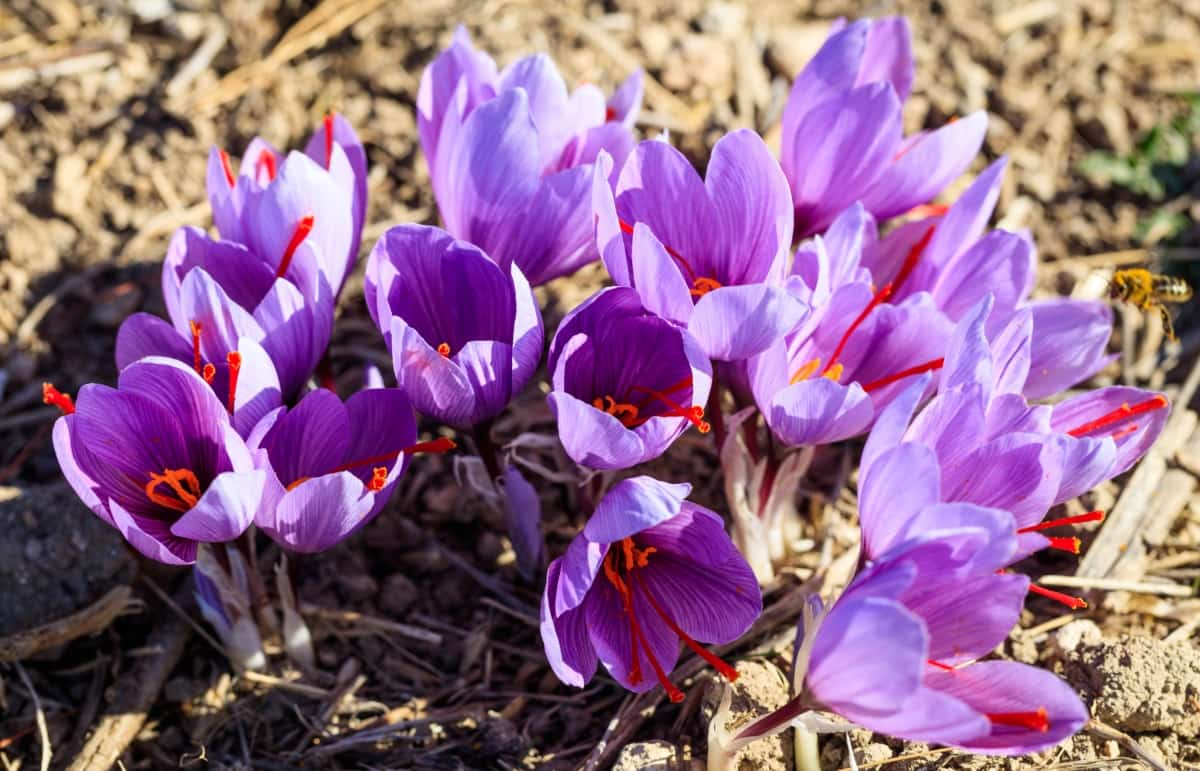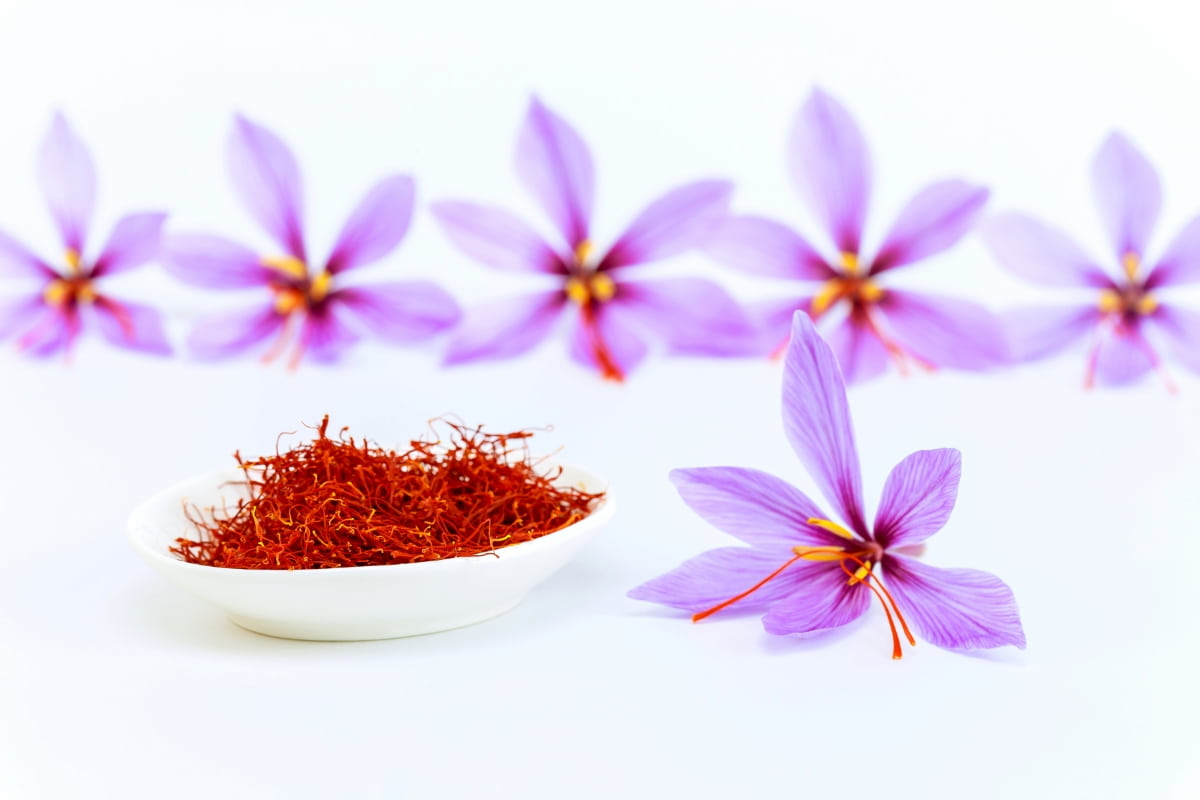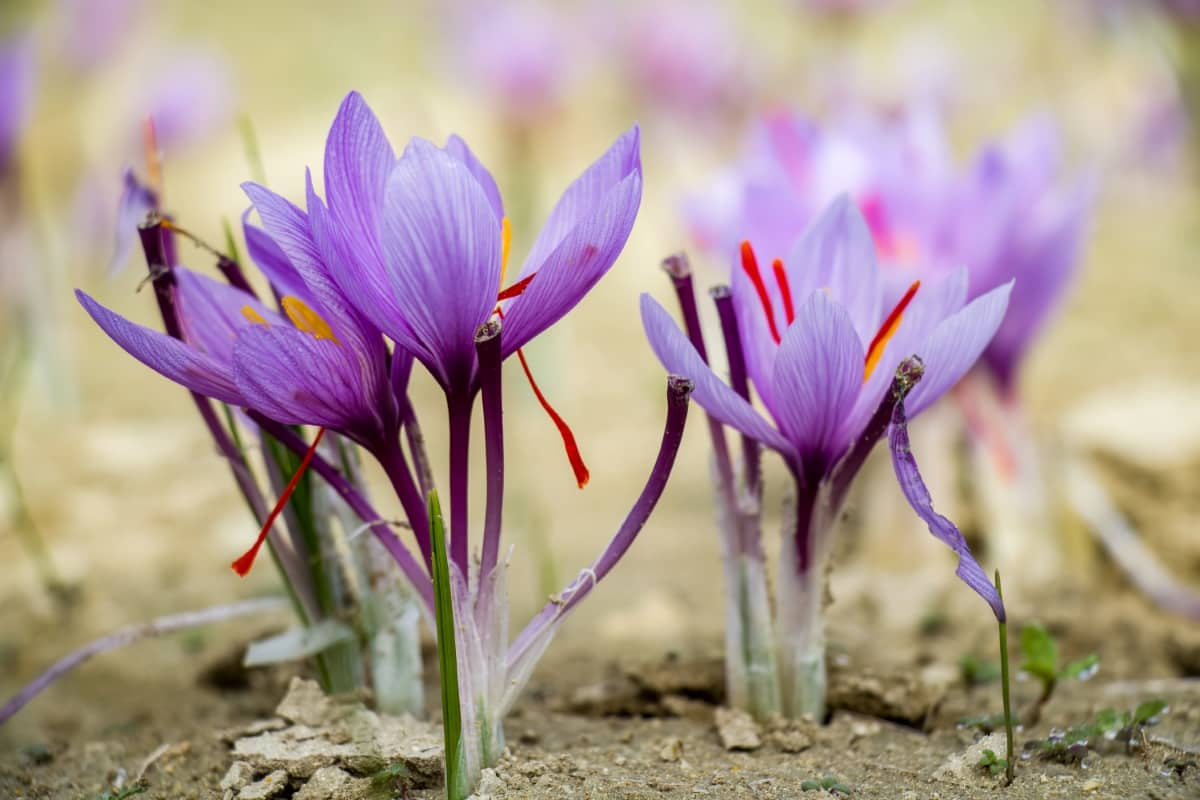Pest management plays a crucial role in Saffron farming, ensuring the health and productivity of the delicate crocus sativus plants. Farmers can protect their crops from potential damage and yield losses by effectively managing pests. Pest management involves implementing various strategies to control pests that can harm Saffron crops. These strategies encompass cultural, biological, IPM (Integrated Pest Management), and chemical control methods.

Pest Management in Saffron Farming
Saffron Pest Identification: Understanding the Common Pests and Their Life Cycles
Pest identification is a crucial step in effective pest management for Saffron farming. The most affected pest in Saffron farming is the aphid. Another pesky critter to watch out for is the spider mite. These microscopic arachnids thrive in hot and dry conditions, making them particularly troublesome for Saffron growers. Spider mites feed on plant cells and sucking out their contents, leading to stunted growth and discoloration of leaves.
Thrips are another group of insects that pose a threat to Saffron crops. Remember, early detection is key. Regular scouting of fields allows farmers to spot any signs of infestation before it becomes widespread. By monitoring closely for signs like sticky residue from aphids or webbing from spider mites, farmers can intervene promptly with appropriate control methods.
Cultural Control Methods by Using Crop Rotation, Sanitation, and Resistant Varieties
The effective technique is crop rotation, which involves changing the crop type grown in a particular area from season to season. This helps break the pest cycle by disrupting their habitat and food sources. Another important cultural control method is sanitation. Keeping the Saffron farm clean and debris-free can minimize hiding places for pests and reduce their population. Regular removal of weeds, fallen leaves, and plant residues can significantly reduce pest infestation.
Using resistant varieties of Saffron plants is another great way to combat pests naturally. Implementing these cultural control methods requires careful planning and consistent maintenance. Farmers need to stay informed about the life cycles of common Saffron pests and adjust their practices accordingly.
Biological Control Methods by Introduction of Natural Predators and Parasites
By introducing natural predators and parasites into the ecosystem, farmers can effectively reduce the population of harmful pests without relying on chemical pesticides. One common example of biological control is using predatory insects like ladybugs or lacewings to feed on aphids notorious for damaging Saffron plants. These beneficial insects act as natural enemies, keeping pest populations in check.
Another method involves releasing parasitic nematodes that target soil-dwelling pests such as root-knot nematodes. These microscopic organisms infect and kill their hosts, reducing damage to Saffron plants’ roots. Introducing these natural allies into Saffron farming systems helps combat pests and promotes ecological balance by minimizing synthetic chemicals that may harm beneficial insects or contaminate the environment.
Chemical Control Methods by Selective Use of Insecticides and Fungicides
Insecticides and fungicides are used selectively to target specific pests and diseases while minimizing the impact on beneficial insects and the environment. When it comes to insecticides, different options are available depending on the type of pest being targeted. Systemic insecticides can be applied as seed treatments or through irrigation systems, providing long-lasting protection against soil-borne pests.
In case you missed it: Best Practices to Grow Saffron Organically: A Guide to Organic Saffron Farming and Certification Process

Contact insecticides, on the other hand, act upon direct contact with the pest and provide immediate control. Fungicides are essential for managing Saffron diseases caused by fungi such as Fusarium and Botrytis. It is crucial to choose fungicides that specifically target the identified pathogens without harming other beneficial microbes present in the soil.
Integrated Pest Management (IPM) in Saffron Farming
Integrated Pest Management (IPM) is a holistic approach to pest control in Saffron farming that focuses on prevention, monitoring, and using multiple strategies for long-term solutions. The key aspect of IPM is monitoring and early detection. Regular inspections allow farmers to identify potential pests before they become a major problem.
To minimize pest infestations, Saffron farmers implement cultural practices such as crop rotation and sanitation measures. Crop rotation helps break the lifecycle of pests by planting different crops in successive seasons. Sanitation practices involve removing plant debris and weeds, which could serve as breeding grounds for pests. Biological control methods are another component of IPM where natural predators or parasites are introduced to manage pest populations effectively without relying solely on chemical pesticides.
Monitoring and Early Detection
By regularly monitoring the crop, farmers can identify any signs of pest infestation in Saffron or disease early, allowing them to take immediate action before the problem worsens. One method of monitoring is through visual inspection. Farmers should regularly walk through their fields, observing the Saffron plants for abnormalities such as yellowing leaves, wilting, or chewed foliage. They should also watch for signs of insect activity, such as webbing or eggs on the plant. Regular monitoring helps detect pest infestations and provides valuable insights into pest behavior patterns and cycles.
Pest Thresholds to DeterminingWhenn to Apply Control Measure
Pest thresholds are predetermined levels of pest presence that trigger control measures. The idea is not to eradicate every single insect or disease but rather to intervene when their population is likely to suffer economic damage. Farmers use various methods to establish these thresholds, such as sampling techniques and knowledge of the pests’ biology and behavior.
In case you missed it: How to Propagate Saffron Bulbs: Best Techniques for Sprouting Saffron Bulbs

Determining thresholds requires careful consideration of factors like crop stage, market value, cost of control measures, and potential impact on beneficial organisms. By understanding these thresholds and employing them in farming, Saffron growers can effectively manage pests without excessive chemical interventions. They can save costs while still protecting their valuable crop from harm.
Saffron Farming Practices to Minimize Pest Infestation
The crucial aspect of successful Saffron farming is minimizing pest infestations. Here are some effective practices to help farmers keep pests at bay and ensure a healthy crop. It’s essential to maintain proper hygiene in the Saffron fields. Regular weeding and removal of plant debris can significantly reduce the presence of pests.
Additionally, practicing crop rotation can disrupt pest life cycles and decrease their populations. Incorporating biological control methods is also beneficial in managing pests in Saffron farming. By regularly inspecting Saffron plants for signs of infestation or disease symptoms, farmers can take prompt action before significant damage occurs.
Preventing Pest Infestations During Storage and Processing
Maintaining proper hygiene is essential. Cleanliness prevents pests from infiltrating your Saffron storage area or processing facility. Proper packaging is another important aspect of pest prevention. Make sure to store your Saffron in airtight containers resistant to pests. Regular inspections are also necessary to catch any signs of pest activity early on.
Look out for telltale signs such as droppings, webbing, or damaged packaging. If you spot any suspicious activity, contact a professional pest management service immediately. By following these measures, you can significantly reduce the risk of pest infestations during the crucial storage and processing stages in Saffron farming.
Frequently Asked Questions (FAQ) on Pest Management in Saffron Farming
How Can Cultural Practices Help in Pest Management in Saffron Farming?
Cultural practices play a crucial role in managing pests in Saffron farming. The effective methods are crop rotation and maintaining proper spacing between plants, allowing for better airflow and reducing moisture levels that can attract pests.
What are Some Common Saffron Pests?
Common Saffron pests include thrips, mites, aphids, and nematodes. It’s essential to identify them early on.
How Often Should I Monitor My Saffron Farm for Pest Infestations?
Regularly monitoring your Saffron farm is essential to detect early signs of pest infestations before they become severe problems. Depending on the season and location, weekly or bi-weekly inspections may be necessary during peak growing periods.
Are There Any Organic Pest Management Options Available?
Yes. Many organic-approved products, such as neem oil or insecticidal soaps, can be effective against certain Saffron pests without harming the environment.
In case you missed it: Frequently Asked Questions About Saffron Farming

Conclusion
Pest management plays a crucial role in Saffron farming, offering numerous benefits to farmers. It helps protect the Saffron crops from potential damage caused by pests and diseases. Farmers can minimize yield losses and ensure a healthy harvest by implementing pest management strategies. Proper pest management practices in Saffron promote sustainability in Saffron farming. Effective pest management enhances overall farm productivity.
- Feed Your Flock for Less: Top 10 Tips to Save on Chicken Feed
- Ultimate Guide to Ossabaw Island Hog: Breeding, Raising, Diet, and Care
- Hatching Answers: The Top 10 Reasons Your Chickens Aren’t Laying Eggs
- Eggs and Economics: Breaking Down the Cost of Raising Backyard Chickens
- Defend Your Greens: Proven Methods to Keep Iguanas Out of Your Garden
- Ultimate Guide to Cinnamon Queen Chicken: A Comprehensive Guide for Beginners
- Ultimate Guide to California Tan Chicken: Breeding, Raising, Diet, Egg-Production and Care
- Ultimate Guide to Marsh Daisy Chicken: Breeding, Raising, Diet, and Care
- 10 Types of Chicken Farming Businesses You Can Start for Profits